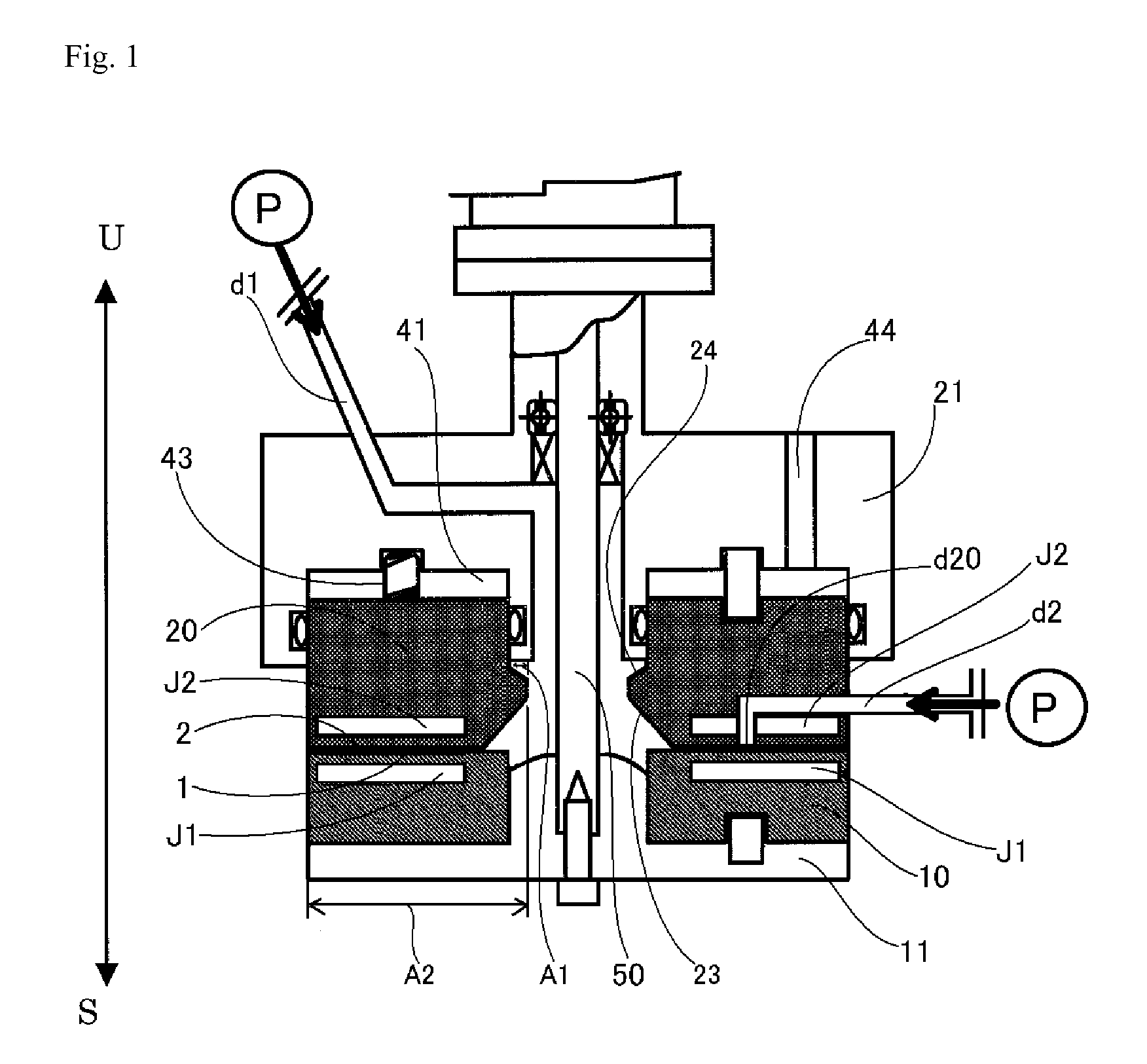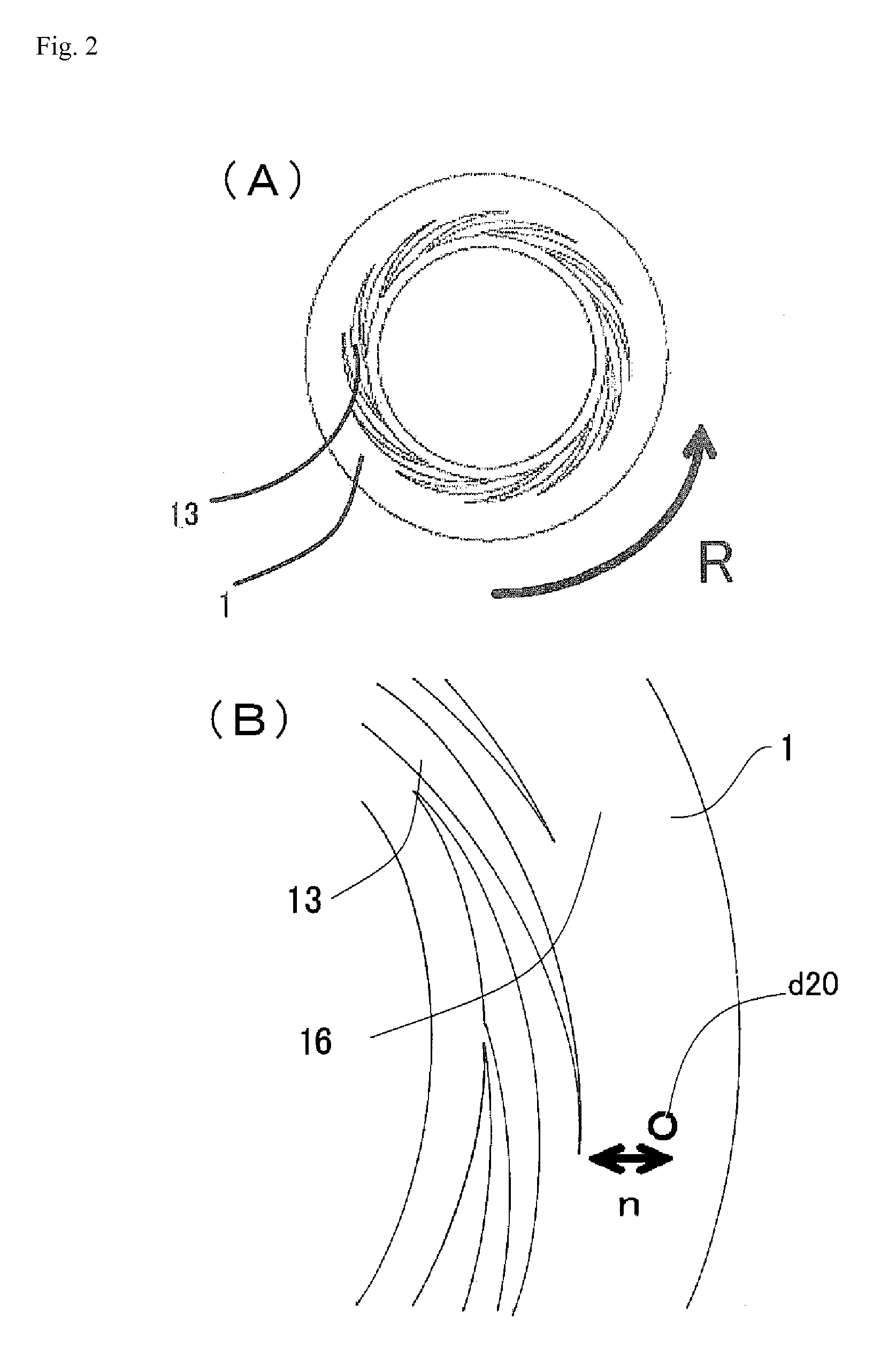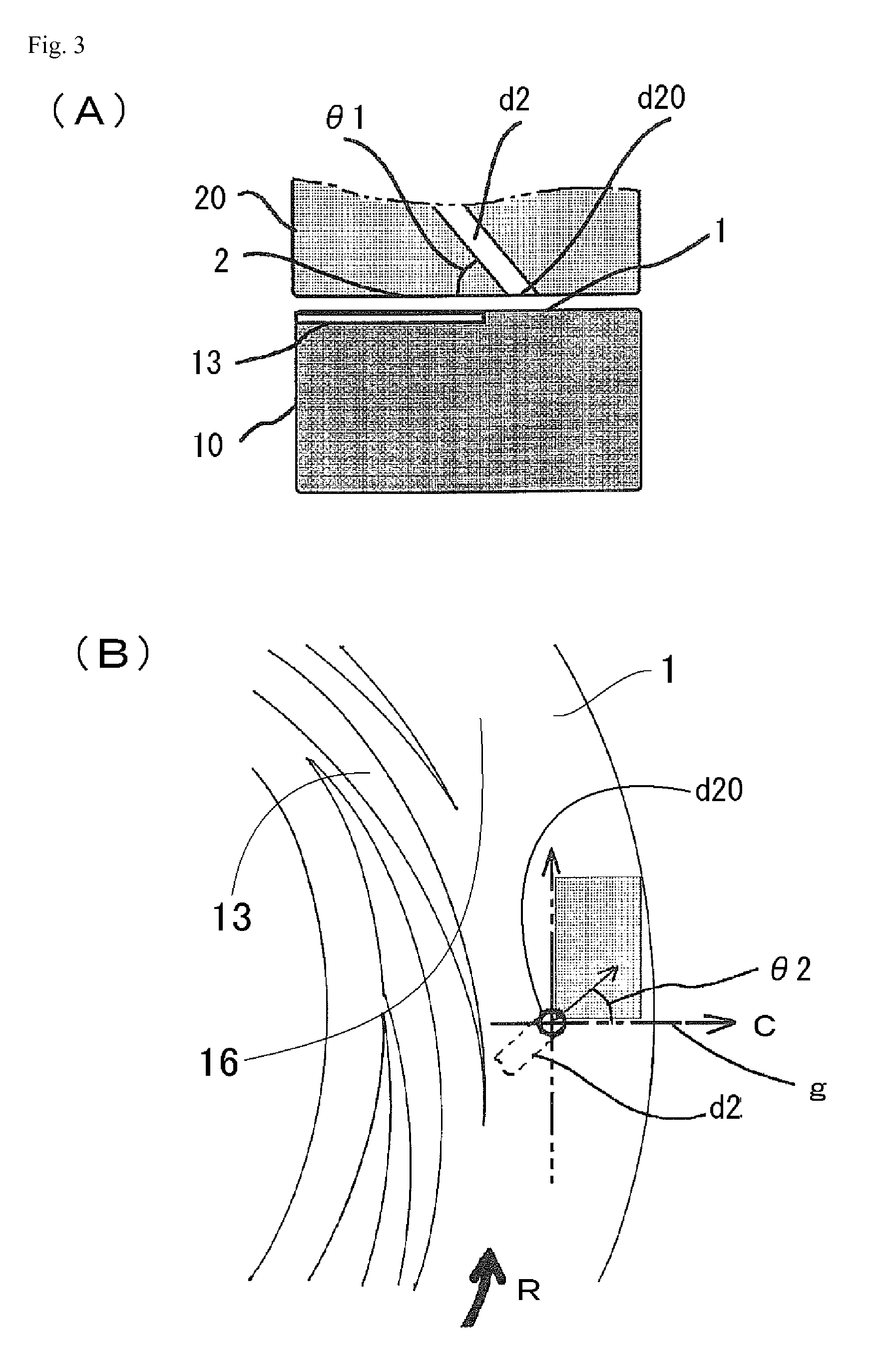Method for producing nanoparticles
a nanoparticle and nanotechnology, applied in the field of nanoparticle production, can solve the problems of difficult to maintain a fine particle diameter, difficult to provide nanoparticles with a uniform particle diameter and a spherical shape, and difficult to control the particle size thereof, so as to achieve stable production, lower energy, and lower cost
- Summary
- Abstract
- Description
- Claims
- Application Information
AI Technical Summary
Benefits of technology
Problems solved by technology
Method used
Image
Examples
example 1-1
[0197]In Example 1-1, by using a reaction apparatus, as shown in FIG. 1, with which diffusion, stirring, and mixing are effected in a thin film fluid formed between the processing surfaces 1 and 2 arranged opposite to each other so as to be able to approach to and separate from each other, at least one of which rotates relative to the other, a diketopyrrolopyrrole pigment solution and an alcohol solvent are mixed, whereby a reaction accompanied with separation is carried out in this thin film fluid.
[0198]A mixed solution composed of 1% acetic acid and 99% methanol was introduced as a first fluid from the center into between the processing surfaces at supply pressure of 0.30 MPa, back pressure of 0.05 MPa, and a rotation speed of 1700 rpm, together with a solution containing a diketopyrrolopyrrole pigment powder (C. I. Pigment Red 254: PR254) dissolved in a mixed solvent of dimethyl sulfoxide (DMOS) with an ethanol solution containing potassium hydroxide (0.5 N—KOH in EtOH) as a seco...
example 1-2
[0199]Example 1-2 was carried out under the same conditions as Example 1-1 except only that both temperatures of the respective sending fluids, i.e., a first fluid and a second fluid, were changed to −13° C. The first fluid and the second fluid were mixed in the thin film fluid; and a dispersion solution of the α-type diketopyrrolopyrrole pigment nanoparticles was discharged from the processing surfaces. The discharged dispersion solution of the pigment nanoparticles had pH of 4.88. The temperature difference between the respective sending fluids of the first fluid and the second fluid was 0° C.
example 1-3
[0200]Example 1-3 was carried out under the same conditions as Example 1-1 except that methanol was used as a first fluid (concentration thereof is 99.5% or higher) and a concentrated sulfuric acid solution of the diketopyrrolopyrrole pigment as a second fluid (pigment concentration of 1% by weight) and that each temperature of the sending fluids of the first fluid and the second fluid was changed to 5° C. and 35° C., respectively. A dispersion solution of the α-type diketopyrrolopyrrole pigment nanoparticles was discharged from the processing surfaces. The discharged pigment nanoparticle dispersion solution had pH of 1.58. The temperature difference between the respective sending fluids of the first fluid and the second fluid was 30° C.
PUM
| Property | Measurement | Unit |
|---|---|---|
| temperature | aaaaa | aaaaa |
| particle diameter | aaaaa | aaaaa |
| size | aaaaa | aaaaa |
Abstract
Description
Claims
Application Information
 Login to View More
Login to View More - R&D
- Intellectual Property
- Life Sciences
- Materials
- Tech Scout
- Unparalleled Data Quality
- Higher Quality Content
- 60% Fewer Hallucinations
Browse by: Latest US Patents, China's latest patents, Technical Efficacy Thesaurus, Application Domain, Technology Topic, Popular Technical Reports.
© 2025 PatSnap. All rights reserved.Legal|Privacy policy|Modern Slavery Act Transparency Statement|Sitemap|About US| Contact US: help@patsnap.com



